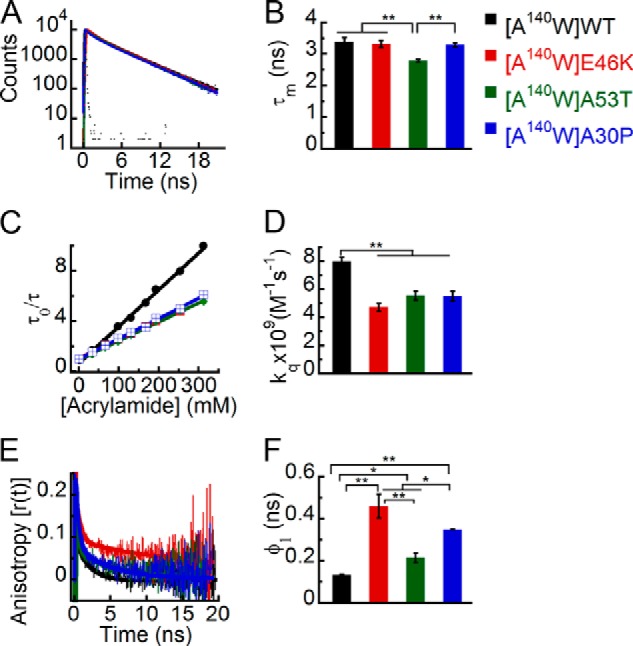FIGURE 10.

Effect of PD-associated mutations on the site-specific structural dynamics of α-Syn at its C terminus (Trp140). Freshly prepared low molecular weight solutions of Trp140 mutant of WT, E46K, A53T, and A30P α-Syns were studied using different fluorescence methods. A, time-resolved fluorescence intensity decay kinetics showing similar decays of fluorescence intensities by Trp140 in WT α-Syn and its PD mutants. B, mean fluorescence lifetime (mean ± S.D., n = 3) showing the different microenvironment at position 140 by A53T compared with WT, E46K, and A30P α-Syns. C, Stern-Volmer plots derived from dynamic fluorescence quenching showing a higher slope for Trp140 in WT α-Syn compared with the PD mutants. D, the bimolecular rate constant (kq) represented as a bar diagram (mean ± S.D., n = 2) showing that Trp140 in WT α-Syn is more solvent-exposed as compared with Trp140 in the PD mutants. E, time-resolved fluorescence anisotropy decay kinetics showing slower decay of fluorescence anisotropy by Trp140 E46K compared with that of WT, A53T, and A30P α-Syns. The fluorescence anisotropy decay of Trp140 WT α-Syn, however, is faster than that of A53T and A30P mutants. F, rotational correlation time (φ1) as represented by a bar diagram (mean ± S.D., n = 2) showing greater rigidity of Trp at position 140 in all PD mutants. The statistical significance is as follows: *, p < 0.05; **, p < 0.01. Error bars represent S.D. The color code in the figure indicates different α-synuclein mutants.
